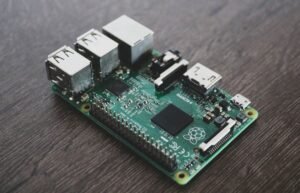When Does Neural Tube Development Occur?
The neural tube is a crucial structure that forms early in the development of an embryo. It eventually develops into the brain, spinal cord, and nerves. Understanding when neural tube development occurs is essential for prenatal care and to prevent neural tube defects.
Key Takeaways
- Neural tube development takes place during the first month of pregnancy.
- It is a critical stage for the formation of the brain and spinal cord.
- Nutrients like folic acid are vital for the proper development of the neural tube.
- Neural tube defects can occur if development is disrupted during this period.
**The neural tube begins to form just three weeks after conception, during the embryonic stage.** This early period is when the embryo is rapidly growing and developing all of its major organ systems. Neural tube development specifically occurs between day 18 and day 26 of gestation. During this time, the neural plate on the upper surface of the embryo folds to form the neural tube.
**The folding of the neural tube is a complex process** involving multiple cell types and signaling pathways. It begins at the midline of the embryo and progresses anteriorly (towards the head) and posteriorly (towards the tail). By the end of the fourth week, the neural tube closes at both ends, completing the process of neural tube development.
Factors Affecting Neural Tube Development
Several factors influence the proper development of the neural tube:
- **Nutrition:** Adequate nutrient intake, particularly folic acid, is crucial for neural tube development. Folic acid supplementation is recommended for women planning to conceive and during the early stages of pregnancy.
- **Genetics:** Genetic factors play a significant role in determining the risk of neural tube defects. Certain gene mutations can impact normal neural tube development.
- **Environmental Factors:** Exposure to certain toxins, such as certain medications or high temperatures, during the critical period of neural tube development can increase the risk of defects.
Preventing Neural Tube Defects
Neural tube defects are serious conditions that can lead to lifelong complications for the affected individuals. Here are some ways to reduce the risk:
- **Folic Acid Supplementation:** Taking the recommended amount of folic acid before and during early pregnancy significantly reduces the risk of neural tube defects.
- **Eat a Balanced Diet:** Consuming a variety of nutrient-rich foods can help ensure adequate intake of vitamins and minerals necessary for proper development.
- **Avoid Harmful Substances:** Limit exposure to harmful chemicals, medications, and substances during pregnancy, especially during the first few weeks.
Tables
| Neural Tube Development Timeline | Developmental Milestone |
|---|---|
| Week 3 | Formation of the neural plate |
| Week 4 | Neural tube closure at both ends |
| Weeks 5-8 | Further differentiation and development of the neural tube into brain and spinal cord |
| Common Neural Tube Defects | Prevalence |
|---|---|
| Spina Bifida | 1-2 cases per 1,000 births |
| Anencephaly | 3-4 cases per 10,000 births |
| Encephalocele | 3-4 cases per 10,000 births |
| Risk Factors for Neural Tube Defects | Level of Risk |
|---|---|
| Prior history of neural tube defect-affected pregnancy | 20 times higher than average |
| Maternal insulin-dependent diabetes | 4-8 times higher than average |
| Maternal obesity | 2-3 times higher than average |
**By understanding when neural tube development occurs and taking appropriate measures, individuals can improve their chances of a healthy pregnancy.** Early prenatal care and proper nutrition are key to supporting the development of the neural tube, reducing the risk of defects, and ensuring the healthy growth of the baby.

Common Misconceptions
Misconception 1: Neural Tube Development Occurs Only during Pregnancy
One common misconception is that neural tube development only occurs during pregnancy. However, this is not entirely true. While the major events of neural tube development do occur during the early stages of fetal development, it is important to note that some aspects of neural tube growth continue into childhood and even adulthood. The neural tube undergoes extensive growth and differentiation during the prenatal period, but it continues to develop and refine its connections throughout life.
- Neural tube development begins around the third week of pregnancy.
- Prenatal folic acid supplementation is crucial for proper neural tube development.
- Neural tube defects can still occur after the closure of the tube during pregnancy.
Misconception 2: Neural Tube Development Occurs Only in Humans
Another misconception is that neural tube development is unique to humans. While it is true that neural tube development plays a significant role in human embryogenesis, it is not exclusive to our species. Many other animals, including mammals, birds, amphibians, and reptiles, also undergo neural tube development. These processes may vary slightly across species, but the underlying principles and mechanisms remain largely the same.
- Neural tube development is conserved across various animal species.
- Animal models are often used to study neural tube defects and development.
- Comparative studies shed light on the evolutionary aspects of neural tube development.
Misconception 3: Neural Tube Development Occurs in the Brain Only
Some individuals mistakenly believe that neural tube development occurs exclusively in the brain. While the brain is a critical part of the neural tube, it is not the only structure formed through this process. In fact, the neural tube gives rise to the entire central nervous system, including the brain and spinal cord. During neural tube development, different regions of the tube form various structures that eventually become the brain, spinal cord, and other essential components of the nervous system.
- The neural tube forms the brain, spinal cord, and other parts of the central nervous system.
- The closure of the neural tube is a crucial step in embryonic development.
- Problems in neural tube closure can lead to severe birth defects.
Misconception 4: Neural Tube Development Occurs in Isolation from Other Systems
Neural tube development does not occur in isolation from other systems in the body. It is a highly coordinated process that involves interactions between the neural tube and other developing systems. For example, signals from the surrounding tissues and organs, such as the mesoderm, play a crucial role in guiding the proper development and positioning of the neural tube. Additionally, defects in other systems can also affect neural tube development, emphasizing the intricate connections between different developmental processes.
- Interactions between the mesoderm and neural tube contribute to its development.
- Disruptions in other systems can impact neural tube formation.
- Understanding the interplay between different processes enhances our knowledge of neural tube development.
Misconception 5: Neural Tube Development is Complete at Birth
Another common misconception is that neural tube development is complete at birth. While many significant milestones in neural tube development are achieved before birth, this process continues beyond delivery. After birth, the neural tube continues to grow and refine its connections, enabling the development of cognitive, motor, and sensory abilities throughout childhood. The ongoing neural tube development highlights the importance of early childhood experiences and interventions in shaping neural networks.
- Postnatal neural tube development is essential for cognitive and motor development in childhood.
- Experience-dependent plasticity plays a significant role in shaping neural connections after birth.
- Understanding postnatal neural tube development helps address developmental delays and disorders.

Neural Tube Development Milestones
During embryonic development, the neural tube forms, eventually giving rise to the brain and spinal cord. Here are some fascinating milestones in the process of neural tube development:
Journey of the Neural Tube
The neural tube starts as a groove in the ectoderm, which then folds inward and fuses, creating a closed tube. This amazing process provides protection for the developing nervous system:
Role of Neural Crest Cells
Neural crest cells, a unique group of cells, play a crucial role in the formation of various tissues and structures in the body. Take a look at some remarkable contributions of neural crest cells:
Formation of Primary Vesicles
As neural tube development progresses, it divides into three primary vesicles, each bearing distinct regions that will later give rise to specific parts of the brain:
Neurulation and Genetic Factors
Neurulation, the process of neural tube formation, is regulated by numerous genetic factors. These genes work together to orchestrate the intricate dance of neural development:
Closure of the Anterior Neuropore
One of the key events in neural tube development is the closure of the anterior neuropore. This crucial milestone marks the completion of neural tube closure along its entire length:
Maternal Folic Acid and Neural Tube Defects
Maternal folic acid intake before conception and during early pregnancy plays a significant role in reducing the risk of neural tube defects in infants. Consider the impact of folic acid supplementation:
Anencephaly and Spina Bifida Prevalence
Anencephaly and spina bifida are two major neural tube defects with varying prevalence worldwide. Explore the incidence rates of these conditions across different regions:
Timing of Neural Tube Development in Humans
Neural tube development occurs in a precise sequence during human embryonic development. Discover the specific timings for the formation of crucial neural tube structures:
Neural Tube Development and Embryonic Age
The stages of neural tube development are closely linked to embryonic age. Find out how the timeline of neural tube development aligns with the age of the embryo:
Understanding the intricate process of neural tube development is crucial for identifying potential disruption points that may lead to birth defects and developing strategies to mitigate these risks. The timeline of neural tube development and the interplay between genetic and environmental factors contribute to the astonishing complexity of human development.
Frequently Asked Questions
What is neural tube development?
Neural tube development refers to the process by which the neural tube, the precursor to the brain and spinal cord, forms during embryonic development.
At what stage of pregnancy does neural tube development occur?
Neural tube development occurs during the first month of pregnancy, usually between the 3rd and 4th weeks after conception.
What factors influence neural tube development?
Several factors can influence neural tube development, including genetics, nutrition, maternal health, and exposure to certain drugs or environmental toxins.
What are the consequences of abnormal neural tube development?
Abnormal neural tube development can lead to various birth defects, such as spina bifida and anencephaly, which can cause lifelong disabilities or even be fatal.
How can neural tube defects be prevented?
Consuming sufficient amounts of folic acid before and during early pregnancy is one of the best ways to prevent neural tube defects. It is also important to maintain a healthy lifestyle and avoid harmful substances.
Can neural tube defects be detected before birth?
Yes, certain prenatal tests, such as alpha-fetoprotein (AFP) screening and ultrasound, can help detect neural tube defects before birth. These tests are usually performed between the 15th and 20th weeks of pregnancy.
Is neural tube development complete after the first month of pregnancy?
No, while the formation of the neural tube occurs during the first month, neural tube development continues throughout pregnancy as the tube differentiates into different structures of the central nervous system.
Are there any known risks that can disrupt neural tube development?
Yes, exposure to certain medications, harmful substances, or medical conditions like diabetes can increase the risk of disruptions in neural tube development.
Can neural tube defects be treated after birth?
Treatment for neural tube defects depends on the severity and specific condition. In some cases, surgical interventions and supportive therapies can be used to manage the effects of neural tube defects.
What research is being done to understand neural tube development?
A lot of research is currently being conducted to better understand the molecular mechanisms involved in neural tube development and to develop potential interventions for preventing and treating neural tube defects.




